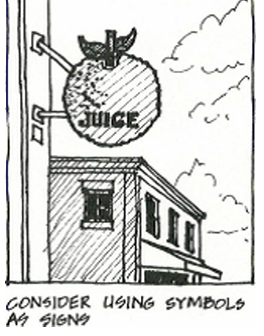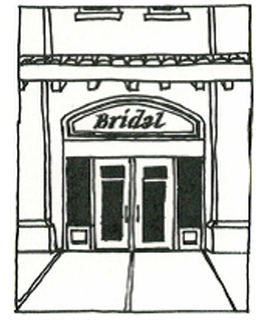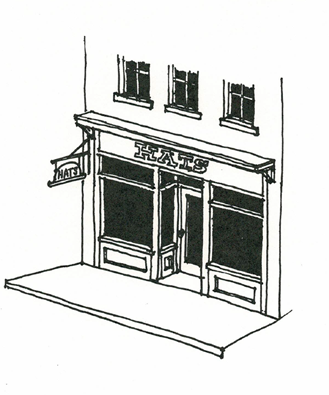 |
Lake Wales (Current through Ordinance 2023-17, Adopted 7-05-2023) |
 |
Code of Ordinances |
 |
Chapter 23. Zoning, Land Use And Development Regulation |
 |
Article VI. Resource Protection Standards |
 |
Division 5. Historic Preservation |
§ 23-653. Certificates of appropriateness.
A certificate of appropriateness is required for work within an adopted historic district if the work meets the criteria set forth in section 23-227. A certificate of appropriateness may be issued by the historic board through the process set forth in that section.
This section sets forth the standards for issuance of a certificate of appropriateness.
Sec. 23-653.1. General review criteria. The decision on all certificates of appropriateness, except those for demolition or relocation, shall be guided by the Secretary of the Interior's Standards for Rehabilitation and Guidelines for Rehabilitating Historic Buildings. The historic board may also adopt guidelines specific to a historic district and shall be guided by the following visual compatibility standards:
a. Height. Height shall be visually compatible with that of adjacent buildings.
b. Proportion of building. The width of building, structure or object to the height of the front elevation shall be visually compatible to buildings and places to which it is visually related.
c. Proportion of openings within the facility. The relationship of the width of the windows in a building, structure or object shall be visually compatible with buildings and places to which the building, structure or object is visually related.
d. Rhythm of solids to voids in front facades. The relationship of solids to voids in the front facade of a building, structure or object shall be visually compatible with buildings and places to which it is visually related.
e. Rhythm of buildings, structures, objects or parking lots on streets. The relationship of the buildings, structures, objects or parking lots to open space between it and adjoining buildings and places shall be visually compatible to the buildings and places to which it is visually related.
f. Rhythm of entrance and porch projection. The relationship of entrances and projections to sidewalks of a building, structure, object, or parking lot shall be visually compatible to the buildings and places to which it is visually related.
g. Relationship of materials, texture, and color. The relationship of materials, texture, and color of a parking lot or of the facade of a building, structure or object shall be visually compatible with the predominant materials used in the buildings to which it is visually related.
h. Roof shapes. The roof shape of the building, structure or object shall be visually compatible with the buildings to which it is visually related.
i. Walls of continuity. Appurtenances of a building, structure, object, or parking lot such as walls, fences, and landscape masses shall, if necessary, form cohesive walls of enclosure along a street, to ensure visual compatibility if the building, structure, object, or parking lot to the building and places to which it is visually related.
j. Scale of building. The size of the building, structure, object, or parking lot; the building mass of the building, structure, object, or parking lot in relation to open space; and the windows, door openings, porches and balconies shall be visually compatible with the buildings and places to which it is visually related.
k. Directional expression of front elevation. A building, structure, object, or parking lot shall be visually compatible with the buildings and places to which it is visually related in its directional character.
Sec. 23-65[3].2. Relocation. In addition to the guidelines provided in subsection 23-652.3., concerning demolition, issuance of certificates of appropriateness for relocations shall be guided by the following factors:
a. The historic character and aesthetic interest the building, structure, or object contributes to its present setting;
b. Whether there are definite plans for the area to be vacated and what the effect of those plans on the character of the surrounding areas will be;
c. Whether the building, structure, or object can be moved without significant damage to its physical integrity; and
d. Whether the proposed relocation area is compatible with the historical and architectural character of the building, structure, or object.
Sec. 23-65[3].3. Demolition. A decision by the historic board on whether to delay (See section 23-227.) the demolition of a building, structure, or object shall be guided by criteria in this section.
a. The historic or architectural significance of the building, structure, or object;
b. The importance of the building, structure, or object to the ambience of a district;
c. The difficulty or the impossibility of reproducing such a building, structure or object because of its design, texture, material, detail, or unique location;
d. Whether the building, structure, or object is one of the last remaining examples of its kind in the neighborhood, the county or the region;
e. Whether there are definite plans for reuse of the property if the proposed demolition is carried out, and what the effect of those plans on the character of the surrounding area would be;
f. Whether reasonable measures can be taken to save the building, structure or object from collapse; and
g. Whether the building, structure or object is capable of earning reasonable economic return on its value.
23-653.4. Signs
BACKGROUND:
Signage coordination with an entire building creates a composition that allows the character of the building to express itself. The result is a building front that has a stronger image than the sign or the building alone.
GUIDELINES:
1. Position signs to fit within architectural features of the facade. Signage should be subordinate to the building design and should not obscure architectural detail. Use signage to emphasize architectural elements e.g. entry, transom.2.
CONSIDER USING SYMBOLS AS SIGNS


INTEGRATE SIGNS WITH ARCHITECTURAL ELEMENTS
.

3. Align signs on an individual building and where possible coordinate size, color and type style.
4. Keep the number of signs to a minimum. Consolidate information with directories. Signs should not overpower the facade. Elements should relate to others in the block. Lettering should be comfortable within the edges of the sign and should be of simple, readable typestyles and properly proportioned. Signs must comply with all other applicable provisions of the Lake Wales Zoning, Land Use, and Development Regulations.
5. Use sign materials compatible with building, facade materials. Signage materials should be durable enough to withstand years of use. Recommended materials include brass plates; carved or painted wood; applied wood and metal letterings; and etched, sandblasted or gilded glass. Unacceptable materials include internally lit thermo-formed plastic letters and signs, imitation wood grain materials, fluorescent colored paints or plastic.
6. Design lighting and mounting hardware as an integral part of the sign. Lighting and mounting should be coordinated with architectural elements of the building.
(Ord. No. 2008-11, § 7, 5-20-08; Ord. No. 2020-30, § 1, 12-02-20)